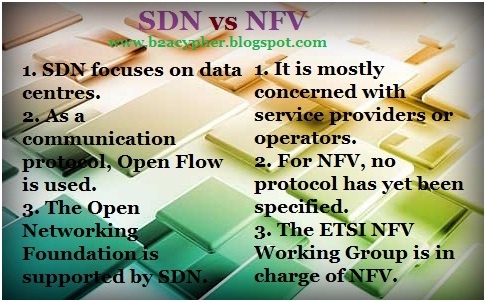What is SDN actually?
- SDN is a networking architecture that enables a dynamic and programmatically efficient network setup to increase overall network performance and make networks flexible and responsive.
- SDN is a technology that separates network device control plane administration from the underlying data plane that forwards network traffic, allowing for more automated provisioning and policy-based network resource management.
- SDN makes networks programmable by isolating the system that decides where traffic should be routed (control plane) from the underlying system that sends data packets to specific destinations (data plane).
- SDN provides customers with a mechanism to control network services using software that makes networks programmable from a central location and allows for speedier configuration.
- Enterprises and service providers may adapt fast to changing business demands and requirements using Software Defined Networking, which increases network control.
- NFV is a network architecture that promises to help network operators launch services faster and for less money by transferring operations like firewalls and encryption from dedicated hardware to virtual servers, combining diverse functions into a single physical server, and lowering total costs.
- NFV enables multiple network operators to implement network policies without having to worry about where functions should be placed in the network or how traffic should be routed via them.
- It's a means to virtualize network services like routers, firewalls, and load balancers that have historically been run on proprietary computer hardware with a proprietary interface, allowing network services to be hosted on virtual machines.
- Multiple operating systems can share a single hardware processor with the help of a hypervisor called a virtual machine manager.
- When compared to networks established with standard networking equipment, it will give high-performance networks with more scalability, flexibility, and adaptability at lower prices.
- As a result, it eliminates the disadvantages of traditional, custom-designed network equipment and decreases the requirement for dedicated or proprietary hardware for network deployment and management.
 |
| SDN vs NFV |
|
SDN |
NFV |
|
Data centers are the primary focus of SDN architecture. |
The NFV technology is aimed at service providers and operators. |
|
By coordinating network control and programmability, SDN separates the control plane and data forwarding plane. |
By shifting network services from dedicated appliances to virtual servers, NFV supports service providers and operators in virtualizing functions such as load balancing, routing, and policy management. |
|
Open Flow is the communication protocol used by SDN. |
For NFV, no protocol has yet been established. |
|
SDN
supports Open Networking Foundation. |
NFV
is driven by ETSI NFV Working group. |
|
SDN is supported by a number of enterprise networking software and hardware providers. |
Telecom service providers and operators are strong advocates of the NFV project. |
|
Corporate
IT acts as a Business initiator for SDN. |
Service
providers or operators act as a Business initiator for NFV. |
|
SDN
applications run on industry-standard servers or switches. |
NFV
applications run on industry-standard servers. |
|
A variety of enterprise networking software and hardware vendors support SDN. |
Because it dynamically allots hardware a degree of capacity to network services needed at a given time, NFV improves scalability and agility while also shortening time-to-market. |
|
Application
of SDN: ·
Networking ·
Cloud orchestration |
Application
of NFV: ·
Routers, firewalls, gateways ·
WAN accelerators ·
SLA assurance ·
Video Servers ·
Content Delivery Networks (CDN) |
